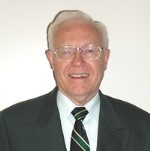A Critical Pseudoscience Problem and Workaround Solution
ADVISORY ARTICLE
By Dr. Kenneth F. Smith
Hawaii, USA
ABSTRACT
This article highlights a flaw underlying the traditional “PERT” approach for estimating project activity durations and proposes a workaround solution.
THE PROBLEM
Estimating activity durations and scheduling project delivery and completion dates is particularly critical for both Contractors with Firm Fixed Price (FFP) contracts, as well as Clients/Donors awarding Cost Plus Fixed or Incentive Fee (CPFF & CPIF) -type contracts.
However, the difficulty of developing realistic time estimates has been pinpointed by participants in my project management seminars as one of their major concerns. Experienced project managers unanimously acknowledge that — for one, or more, reasons – planned schedules were typically under-estimated. Even those using the standard “PERT” formulas to estimate activity & project duration said that in practice both the “Most Likely” and the subsequently-calculated “Earliest Expected” times were unrealistic; being significantly over-optimistic!
As a bit of background, the Program Evaluation & Review Technique (PERT) is a statistical probability-based time-estimating technique of the Critical Path Method (CPM) — introduced in the late 1950’s — with which I became acquainted in the early 1960’s when I was a management intern on the U.S. Navy’s Polaris Project. Today, PERT is a standard tool, incorporated into some scheduling software for use when there is uncertainty with individual activity time duration estimates. [Not incidentally, when visiting Pearl Harbor with some of my grandkids a few years ago, I was shocked to see a Polaris Missile on exhibit as a museum piece near the entrance to the visitors’ center!]
The PERT formula for estimating an activity duration is: te = ( Opt + 4M + Pess ) / 6
Where:
te = earliest expected time estimate, i.e. a weighted average or “mean” of the range of possibilities
Opt = optimistic time estimate
M = most likely time estimate
Pess = pessimistic time estimate
4 = a constant weight
6 = a constant divisor
For example, where: Opt = 3; M= 7 and Pess = 23:
te = [3 + 4(7) + 23] / 6 = [(3 + 28 + 23)] / 6 = 54 / 6 = 9
Although seemingly more statistically sophisticated than a simple 3 point ‘average’ estimate – i.e. an arithmetic mean — the fundamental flaw in using this formula to estimate an Activity (or activities, and the overall project schedule) duration is that — by definition — the resultant te is merely a weighted average. Hence the probability for completing the Activity (activities, and/or project schedule) by the expected time is still only 50%. In other words, if/when applied to project activity scheduling, the calculated Project Activity te duration is under-estimated at least half of the time. Consequently, from the outset, the odds of the resultant activity milestones – and, indeed, the overall project – being completed as planned are just 50 / 50 — a very high risk that the estimated schedule will be overrun. In essence — despite giving more weight to the Most Likely estimate — this pseudoscientific approach to take probability into account in estimating activity durations is still no better than tossing a coin!
More…
To read entire article, click here
How to cite this article: Smith, K.F. (2019). Estimating Realistic Activity Times: A Critical Pseudoscience Problem and Workaround Solution, PM World Journal, Vol. VIII, Issue IX, October. Available online at https://pmworldlibrary.net/wp-content/uploads/2019/10/pmwj86-Oct2019-Smith-estimating-realistic-activity-times.pdf
About the Author

Dr. Kenneth Smith
Honolulu, Hawaii
![]()
Dr. Kenneth F. Smith has been a project management consultant for ADB, the World Bank, and USAID for decades. He earned his DPA (Doctor of Public Administration) from the George Mason University (GMU) in Virginia and his MS from Massachusetts Institute of Technology (MIT Systems Analysis Fellow, Center for Advanced Engineering Study). A long-time member of the Project Management Institute (PMI) and IPMA-USA, Dr. Smith is a Certified Project Management Professional (PMP®) and a member of the PMI®-Honolulu Chapter.
NOTE: Ken’s book — Project Management PRAXIS (available from Amazon) — includes many other innovative project management tools & techniques; and describes a “Toolkit” of related templates available directly from him at kenfsmith@aol.com.









